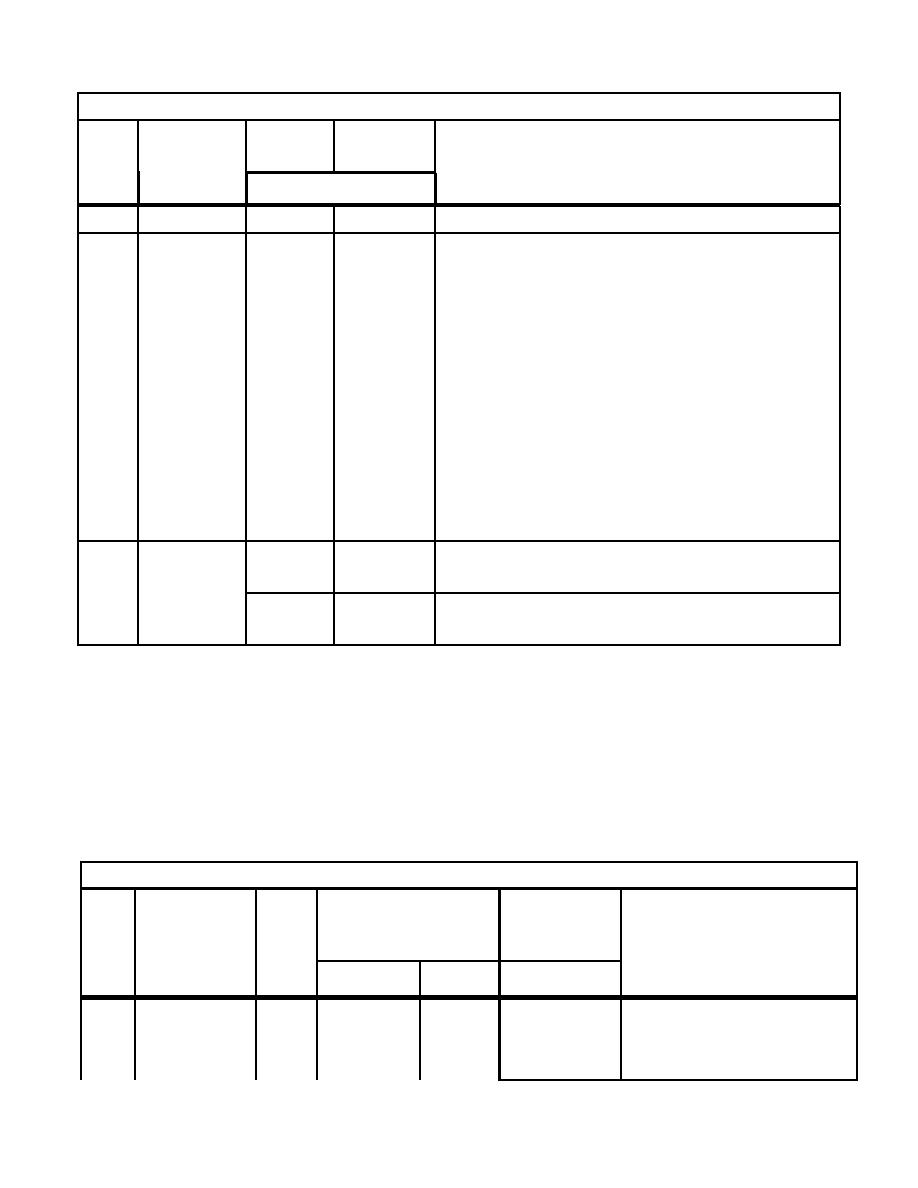
Chapter 3
Table 3.6. Accident Potential Zones (APZ).
Class A
Class B
Runway
Runway
Item
Item
No.
Description
Requirement
Remarks
[3,000 ft]
2,133.60 m APZ II starts at the end of the APZ I, and is centered
3
APZ II
762.00 m
[7,000 ft] and measured on the extended runway centerline.
Length
[2,500 ft]
Modifications will be considered if:
- The runway is infrequently used.
- Prevailing wind conditions are such that a large
percentage (that is, over 80 percent) of the
operations are in one direction.
- Local accident history indicates consideration of
different areas.
- Most aircraft do not overfly an APZ area as
defined here during normal flight operations
(modifications may be made to alter these zones
and adjust them to conform to the line of flight).
- Other unusual conditions exist.
4
APZ II
304.80 m
304.80 m
Army airfields.
Width
[1,000 ft]
[1,000 ft]
914.40 m
Air Force, Navy and Marine Corps airfields.
[3,000 ft]
Notes:
1. Applicable to aviation facilities of the Military Departments in the United States, its Territories, trusts, and
possessions. For military facilities overseas, other than in locations designated, follow guidance of the
individual service component.
2. For guidance on land use within the APZ's, see land use compatibility guidelines in DoD Air Installations
Compatible Use Zone (AICUZ) guidelines (Attachment 4). For USAF, see AFI 32-7063 and AFH 32-7084..
3. Metric units apply to new airfield construction, and where practical, to modifications to existing airfields and
heliports, as discussed in Paragraph 1.4.4.
4. Airfield and heliport imaginary surfaces and safe wingtip clearance dimensions are shown as a direct
conversion from inch-pound to SI units.
Table 3.7. Airspace Imaginary Surfaces.
Class A Runway
Class B
Requirement
Runway
Item
Item
Requirement
No.
Description
Legend
VFR
IFR
VFR & IFR
Remarks
Primary
A
1
304.80 m
304.80 m
surface width
[1,000 ft]
[1,000 ft]
304.80 m
Army airfields
[1 000 ft]
3-35


 Previous Page
Previous Page
